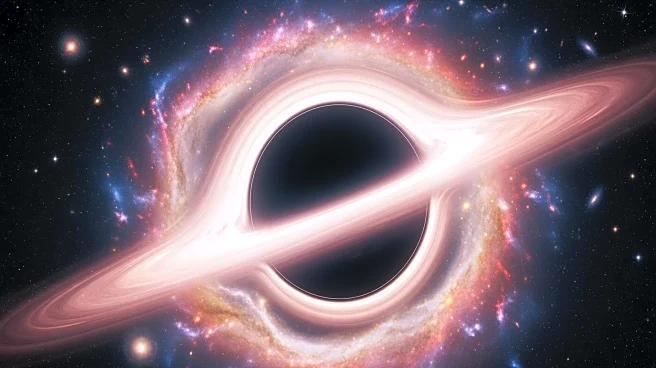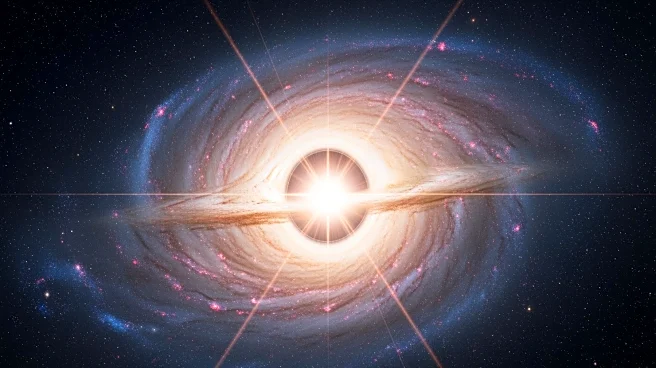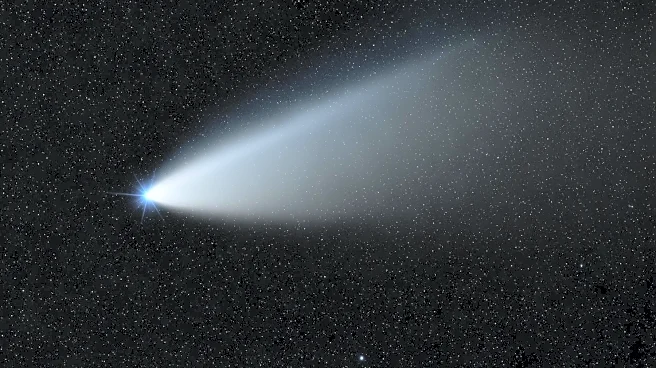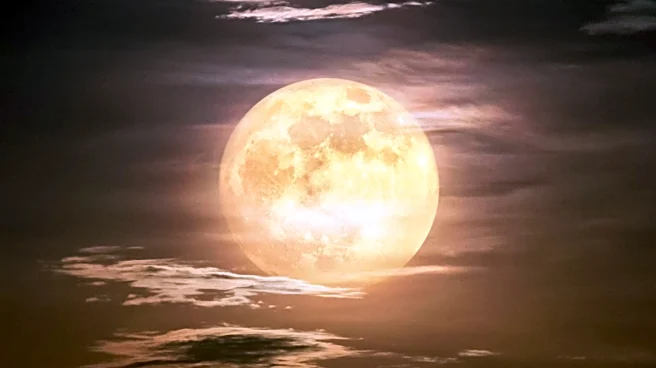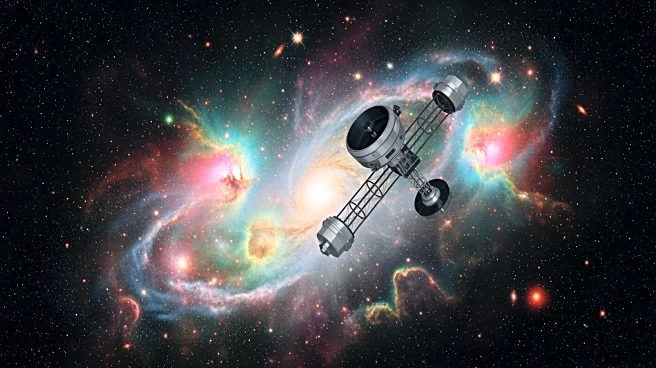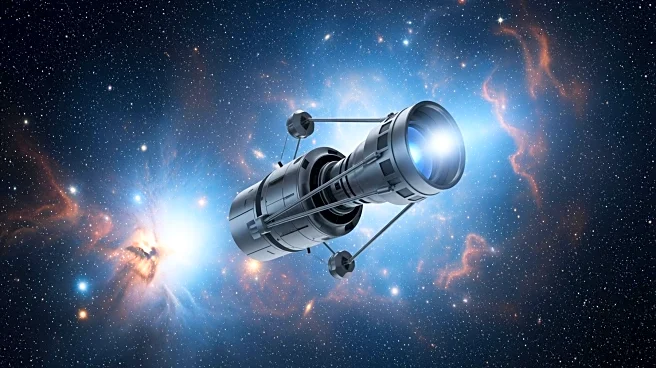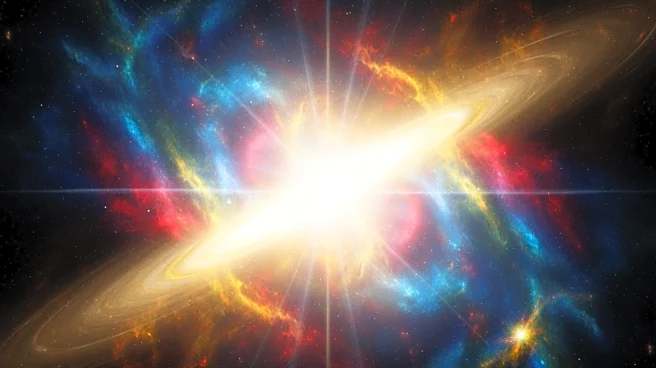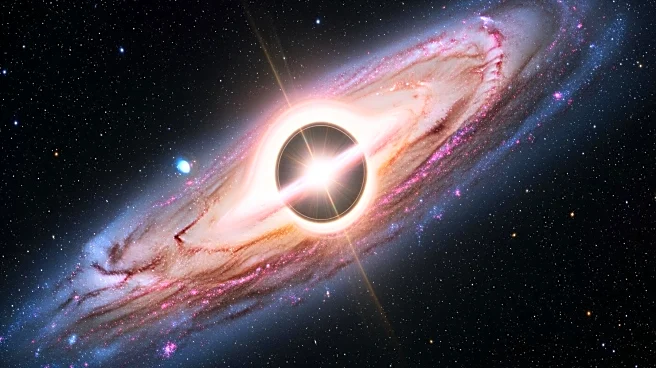What's Happening?
The Milky Way galaxy, home to Earth, contains a supermassive black hole known as Sagittarius A*. Despite its massive size, being 4.3 million times the mass of the sun, its gravitational influence on Earth is
minimal. The black hole is located 27,000 light-years away from Earth, making any immediate threat of being consumed by it unlikely. Sagittarius A* is considered dormant, although it has consumed matter in the past, evidenced by energy emissions in the form of X-rays and infrared light. The first image of Sagittarius A* was captured in 2022, following a global research effort. The black hole's gravitational pull is negligible compared to the sun, which comprises over 99% of the solar system's mass.
Why It's Important?
Understanding the dynamics of Sagittarius A* is crucial for astrophysics and cosmology. While the black hole poses no immediate threat, studying it helps scientists learn about the behavior of supermassive black holes, which are more common than previously thought. These black holes can distort space around them due to their immense mass. The research on Sagittarius A* also contributes to broader theories about the universe, such as the possibility that the universe could have formed inside a black hole. This knowledge can influence future space exploration and our understanding of cosmic phenomena.
What's Next?
Scientists will continue to monitor Sagittarius A* and study its behavior to gain insights into black hole dynamics. Ongoing research may uncover more about the potential for black holes to be the origin of new universes, as suggested by some theoretical physicists. The study of Sagittarius A* will also aid in identifying other supermassive black holes and understanding their impact on their respective galaxies.
Beyond the Headlines
The theory that the universe could have formed inside a black hole, known as Schwarzschild cosmology, presents a paradigm shift in understanding cosmic origins. If proven, it could redefine the concept of black holes from being endpoints to potential beginnings of universes. This theory, while still speculative, encourages a reevaluation of the role of black holes in the cosmic lifecycle.


